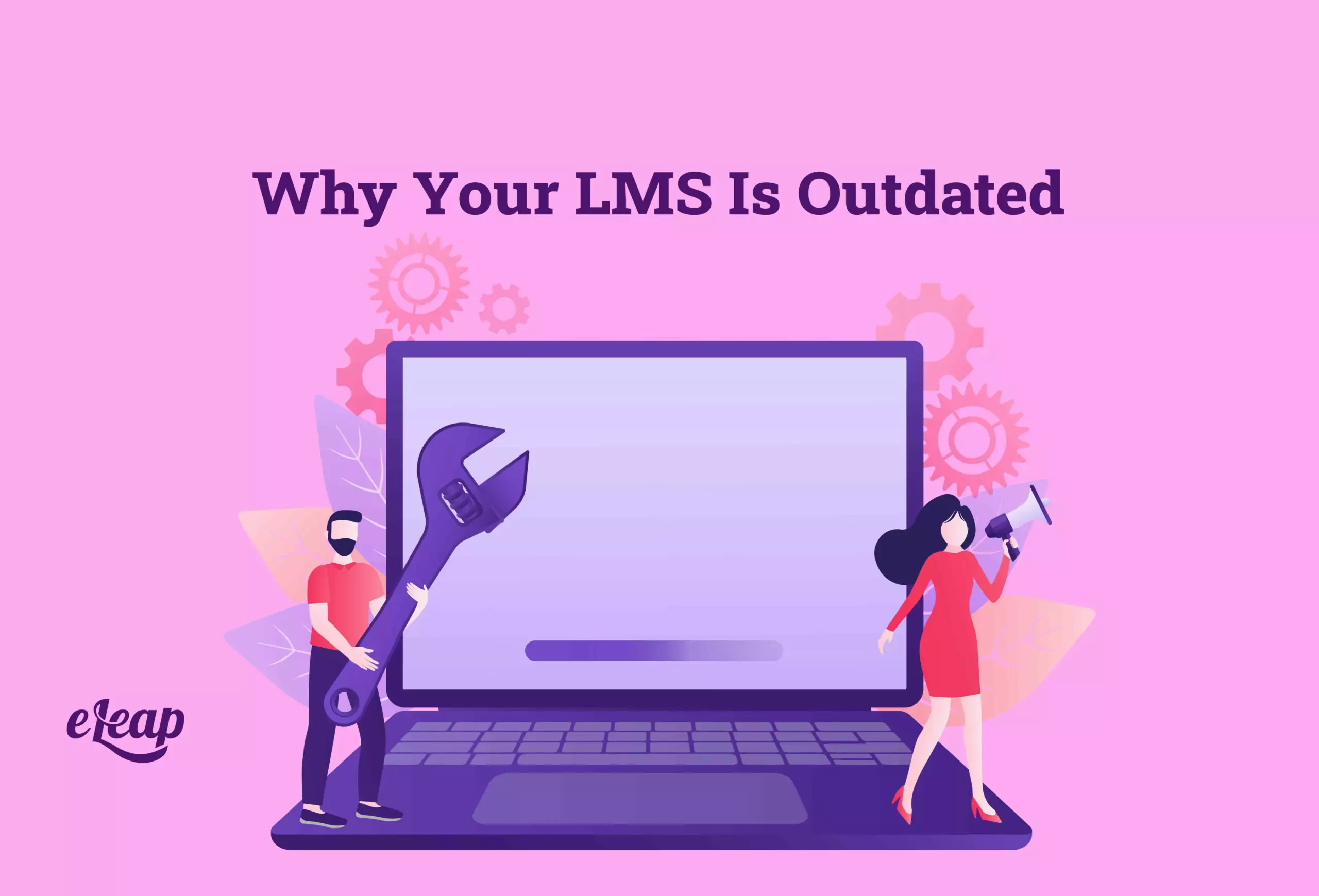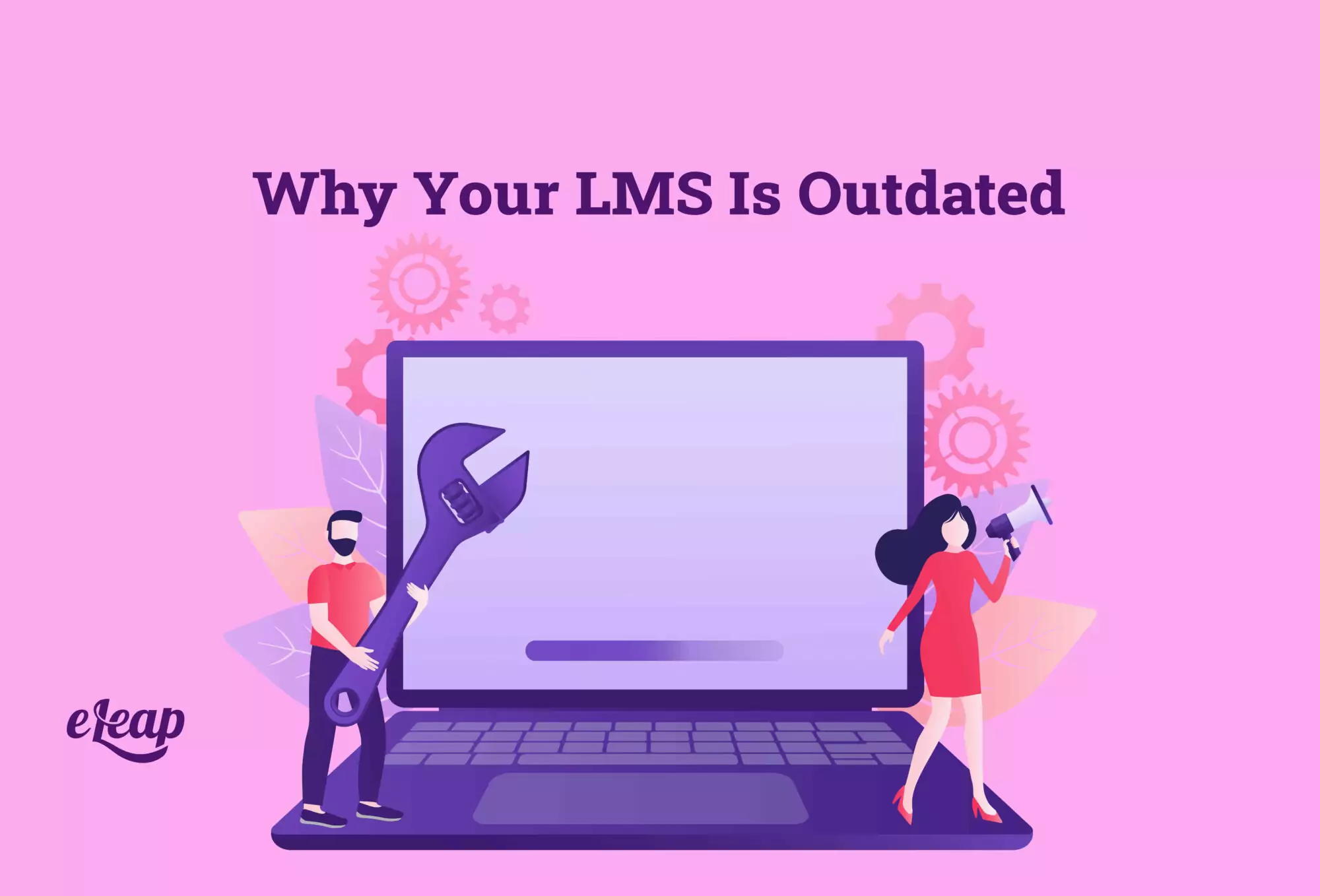Why Your LMS Is Outdated

Having the right LMS is crucial for any corporate organization. The wide variety of different tasks possible with the right LMS provides companies with many different advantages.
However, it’s just as important to ensure that your LMS is up to date and contains the most important customizations and highlights. If your LMS has been working for you, it can be hard to identify what is outdated and what’s not.
Regardless of how well something works, it’s always important to incorporate new elements that give you benefits. The following article explains how to tell when your LMS may be outdated.

What Should Your LMS Platform Do?
There are infinite possible customizations on an LMS platform. However, at the very least, you should look to your LMS to perform the following:
- Onboard new hires
- Train new employees in compliance and corporate culture
- Allow remote training
- Increase retention
- Support general knowledge and education
Now that you understand the basics of what should be contained within an LMS, it’s easier to identify what needs to be replaced. In the following section, we’ll go into further detail regarding upgrades to your current LMS software.
5 Reasons Your LMS Platform Should Be Updated
The first eLearning platform was deployed in the early 1990s. This means that since then, there have been thousands of potential upgrades and changes that platforms have undergone.
It’s important to update your platform to ensure that your employees remain engaged and learn at the most efficient level. The following section outlines the top signs that it’s time to upgrade your LMS platform.
1. User Interface Is Unappealing
The average LMS platform is made up of two main areas – the admin interface and the user interface. Admin interfaces contain the important elements that enable management to make changes to the platform.
The user interface is the area where employees interact with the platform and navigate the different areas. Most user interfaces run within a browser or an app the employee is using the platform on.
It can be difficult to overlook the importance of an appealing user interface from a management standpoint. When you rarely interact and learn yourself, important elements may go unnoticed.
One of the most important points to note is the speed of the interface. There shouldn’t be any noticeable lacking or slowing down of the program.
Additionally, a visibly outdated interface may bore your employees. It’s important that you update the interface to make it more engaging and user-friendly.
2. Lack of Gamification
Incorporating gamification is one of the most important elements of the modern-day LMS platform. If you’re unaware of gamification and the benefits of this customization, you’re missing out on some important advantages.
Gamification is the act of making an LMS platform competitive and more engaging by adding certain customizations. Competitions, badges, and other elements can keep users more engaged by giving them the incentive to perform more efficiently.
Studies have shown that platforms involving gamification are significantly more effective than those that don’t. The current class of corporate team members thrives with elements like this, and things don’t seem to be changing any time soon.
3. Inefficient Learning and Analytics
One of the most important elements of any LMS platform is having the right learning and analytical capabilities. The point of an LMS platform is to allow employees to learn while obtaining important insight about certain metrics.
Data is compiled surrounding these metrics, and the ability to analyze them is incredibly important. Without this ability, it can be difficult to understand where your LMS thrives and where it needs improvement.
You should be able to analyze the following metrics on your LMS:
- The learning progress of teams and employees
- Time spent on certain courses
- Status of courses
- Completion rates
- How many times quizzes are attempted
- Retention rates
- Login dates and times
When you have access to these data sets, you can understand how well employees are engaging with the platform. For example, if login dates and times are low or non-existent, it’s a good indicator that your LMS isn’t performing as well as it once did.
4. Lack of Expert Mentoring
Expert mentoring is important to incorporate into an LMS. Video content is proven to produce the best rates of engagement, and expert mentoring is a part of video content.
The videos are pre-recorded, but that doesn’t make them any less valuable. When employees can receive education and knowledge from experts in the field in the form of video content, the retention rates skyrocket.
5. No Personalization
If your LMS platform has a lack of personalization options, it could be a good sign that it’s time to upgrade. Many larger corporations benefit the most from personalization elements, and it can be difficult to optimize any LMS platform without these elements.
Store shelf versions of LMS platforms are effective as well, but when organizations have special departments or unique areas of performance, customization is important. Not every LMS platform is created equal, and having the ability to customize can put you ahead of the curve.
Before you upgrade, it’s important to ensure which elements are customizable. Can you incorporate specific areas of learning? Are important programs able to be integrated within your LMS platform?
These are all important questions you should ask regarding customization. If you can’t integrate certain programs, you run the risk of losing the benefits of these programs during employee training.
Upgrading your LMS doesn’t always mean completely overhauling and redeploying the entire setup. Sometimes it’s as easy as updating certain features and discussing options with your technical support representative.
When you do upgrade, it’s important to have a firm understanding of the changes being made. Make sure tech support runs you through how to deploy the changes so you can benefit from these upgrades in the most efficient manner.
Another important way of identifying changes that should be made is through surveys conducted on employees. Sometimes first-hand knowledge is the best way to gain an understanding of what needs improvement on your platform!